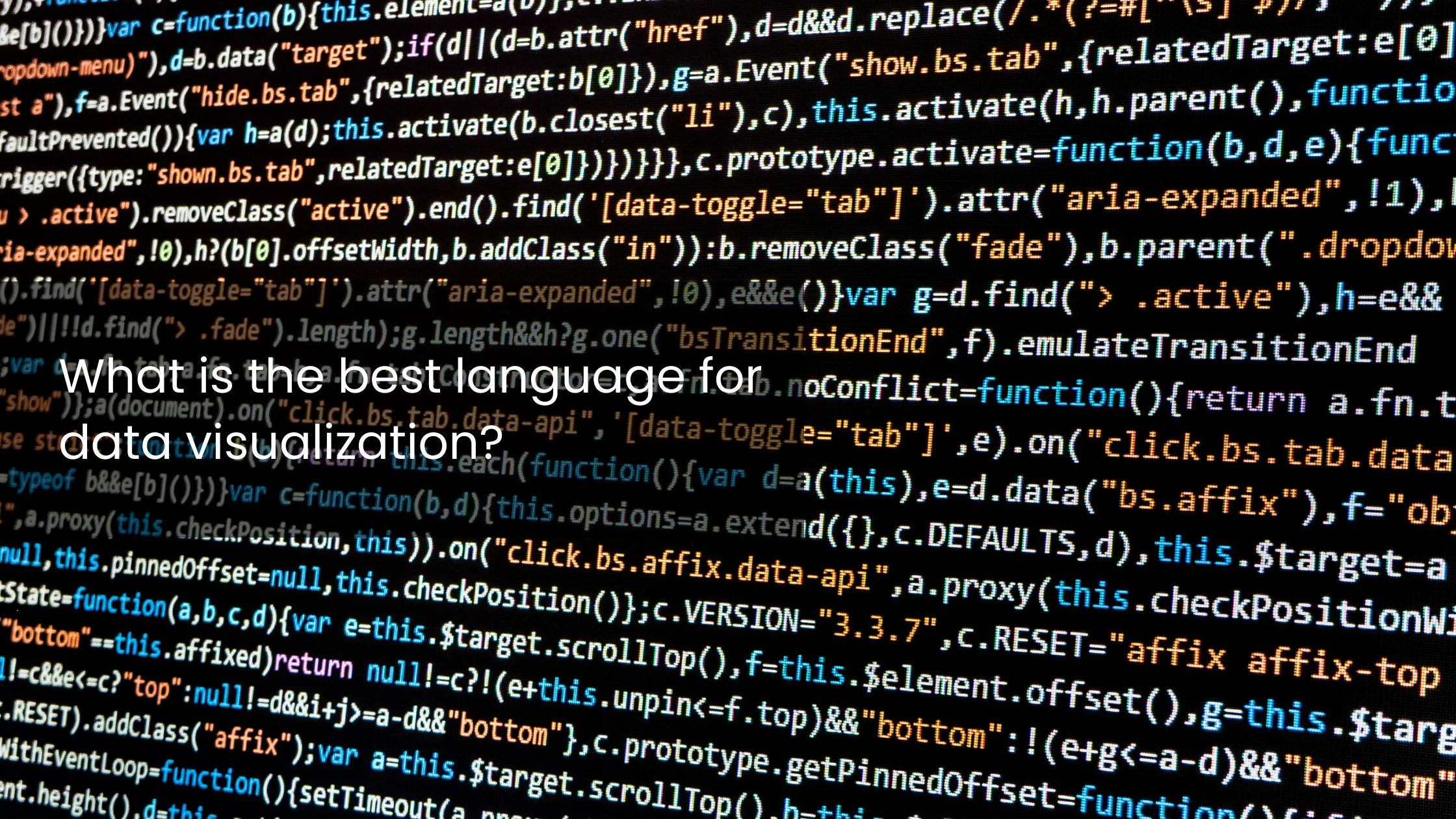 Data visualization is an essential skill in the modern world of data analysis and science. It transforms raw data into visual stories, making complex information more accessible and understandable. When it comes to choosing the best language for data visualization, the decision often comes down to three popular contenders: Python, R, and JavaScript. Each language has its strengths and unique features that cater to different needs and preferences. Let's explore these languages to help you make an informed decision.
Data visualization is an essential skill in the modern world of data analysis and science. It transforms raw data into visual stories, making complex information more accessible and understandable. When it comes to choosing the best language for data visualization, the decision often comes down to three popular contenders: Python, R, and JavaScript. Each language has its strengths and unique features that cater to different needs and preferences. Let's explore these languages to help you make an informed decision.
Python: The Versatile Powerhouse
Python is widely known for its simplicity and versatility. It's a popular choice for many data scientists due to its readability and extensive range of libraries that simplify the data visualization process.
- Matplotlib: One of the most widely used libraries, Matplotlib is perfect for creating basic charts and plots. It's highly customizable, though it can require more code for advanced visualizations.
- Seaborn: Built on top of Matplotlib, Seaborn makes it easier to create attractive and informative statistical graphics. It’s particularly good for complex visualizations with fewer lines of code.
- Plotly: Known for its ability to create interactive visualizations, Plotly is ideal for dashboards and web applications. It supports a wide range of chart types and is particularly user-friendly for interactive plots.
Python’s flexibility and the robustness of its libraries make it a top choice for many data visualization tasks, from simple plots to complex interactive graphics. If you want to delve deeper into Python's capabilities, consider exploring our Machine Learning and Data Science with Python course.
R: The Statistical Expert
R is specifically designed for statistics and data analysis. It excels in creating high-quality, publication-ready graphics, making it a favourite among statisticians and data analysts.
- ggplot2: Based on the Grammar of Graphics, ggplot2 is a powerful R package that allows for intricate and customizable visualizations. It’s perfect for creating complex, layered graphics with relative ease.
- Shiny: Shiny is a framework for building interactive web applications in R. It’s particularly useful for sharing your data visualizations with a broader audience through dynamic, interactive web apps.
R’s focus on statistical analysis and its strong graphical capabilities make it an excellent choice for those heavily involved in data analytics and research. For a comprehensive guide on using R for data science, our Advanced Data Science and Machine Learning Masterclass is a great resource.
JavaScript: The Web Specialist
For web-based visualizations, JavaScript is the go-to language. Its libraries offer unparalleled flexibility and interactivity, making it the backbone of modern web visualizations.
- D3.js: Known for its powerful capabilities, D3.js allows you to create complex, dynamic, and interactive visualizations. It has a steep learning curve but offers unmatched control over the final output.
- Chart.js: More user-friendly than D3.js, Chart.js is a great option for creating simple yet effective visualizations. It’s easy to use and integrates well with other web technologies.
- Three.js: If you’re interested in 3D visualizations, Three.js is a robust library for creating 3D graphics in the browser. It’s widely used for creating interactive 3D visualizations and virtual reality experiences.
JavaScript is ideal for creating highly interactive and visually appealing web-based visualizations, especially when performance and responsiveness are crucial. For those looking to master JavaScript and its libraries, our Advanced Software Testing course offers insights into creating robust, interactive applications.
Choosing the Right Language
The best language for data visualization depends on your specific needs and background:
- Python is a great choice if you’re looking for versatility and ease of use, especially if you’re already familiar with its ecosystem.
- R is perfect for those focused on statistical analysis and research, offering high-quality graphics and tools tailored for data analysis.
- JavaScript is the top pick for web developers and those needing highly interactive and dynamic visualizations for web applications.
Frequently Asked Questions
Which language is best for interactive data visualization?
JavaScript is the top choice for web-based, interactive data visualization. Libraries like D3.js and Chart.js offer powerful, customizable tools.
Is Python or R better for beginners in data visualization?
Python is more beginner-friendly due to its simple syntax and popular libraries like Matplotlib and Seaborn. R, while powerful, has a steeper learning curve.
What makes R a strong contender for data visualization?
R is designed for statistical computing and shines with ggplot2 and Shiny for high-quality, customizable charts and interactive applications.
Can I build dashboards using Python?
Absolutely! Python offers Plotly, Dash, and Streamlit—excellent tools for building professional dashboards with real-time interactivity.
What’s the best course to learn data visualization using Python?
The Machine Learning and Data Science with Python course at Cinute Digital teaches you Python, data visualization libraries, and real-world projects.
Conclusion
Each of these languages—Python, R, and JavaScript—offers unique strengths for data visualization. Your specific project requirements, your existing skill set, and your goals for the visualizations should guide your choice. Whether you need simple plots, complex statistical graphics, or dynamic web-based visualizations, there’s a language that’s perfect for your needs.
By understanding the strengths and applications of Python, R, and JavaScript, you can select the right tool to turn your data into compelling visual stories. Happy visualizing!